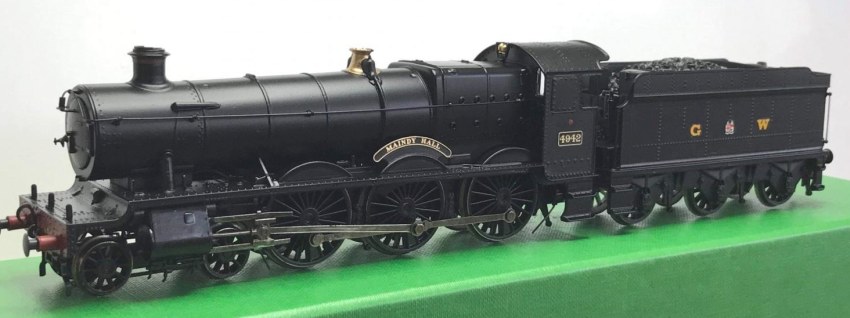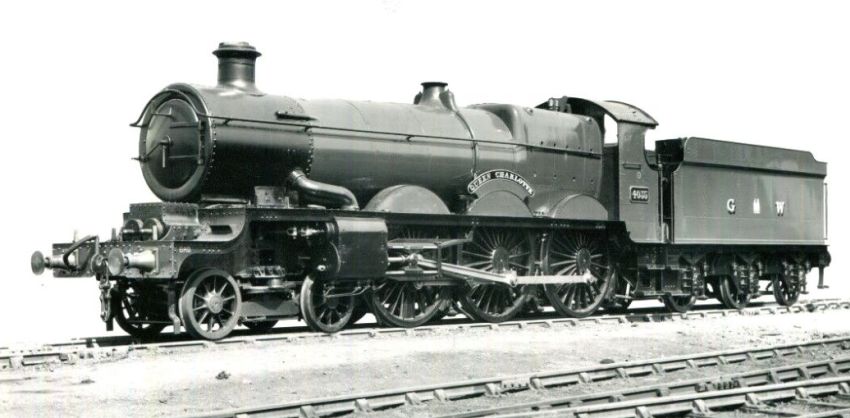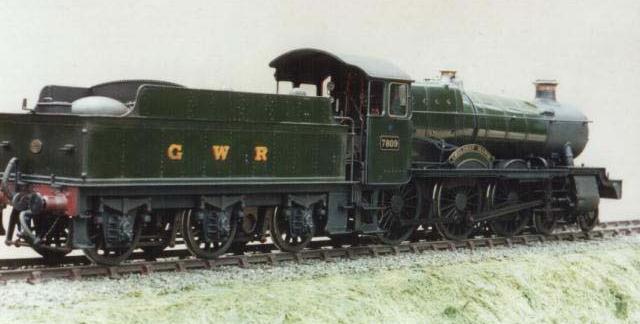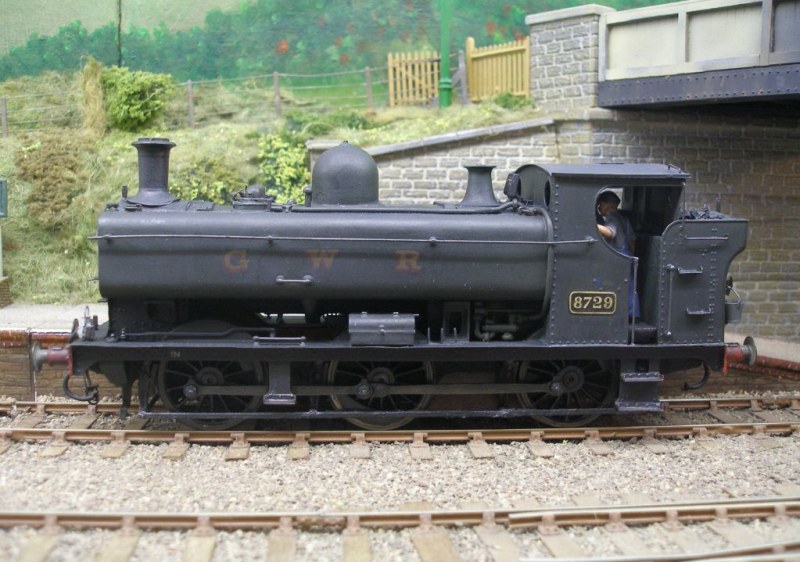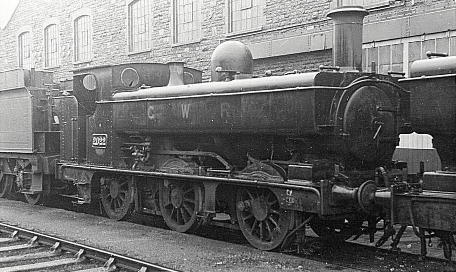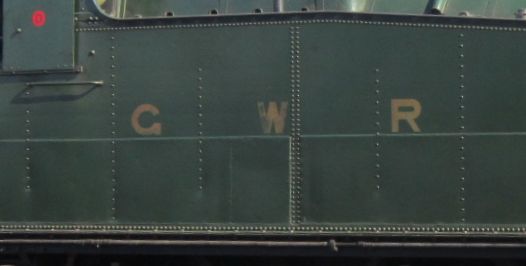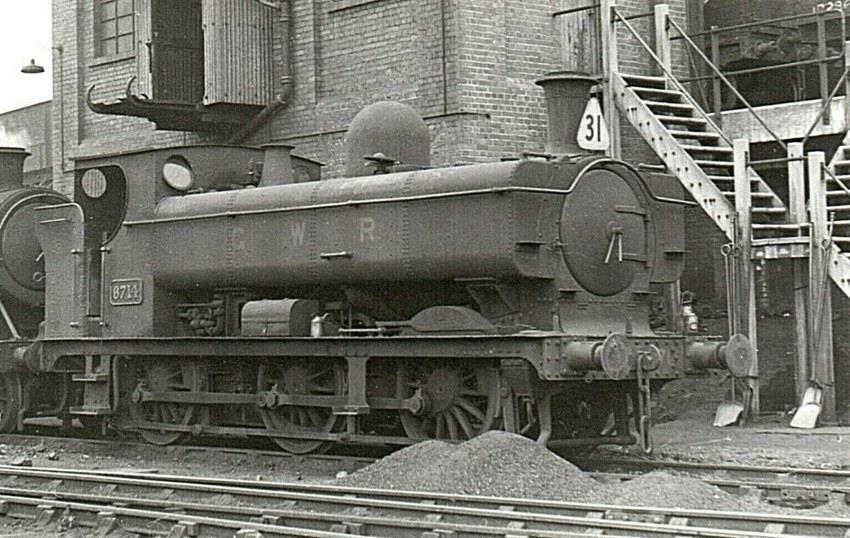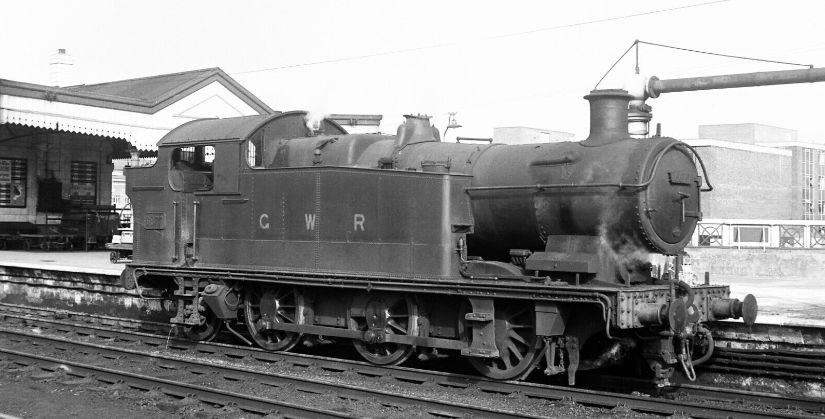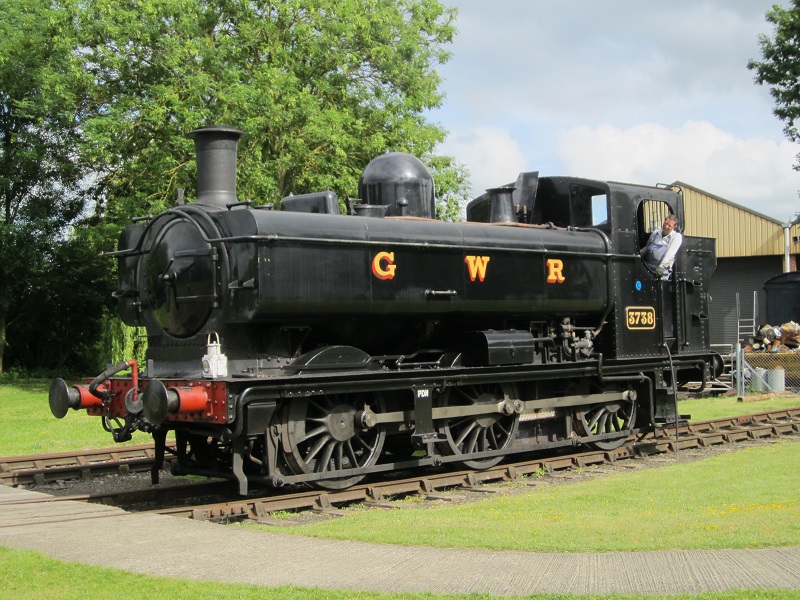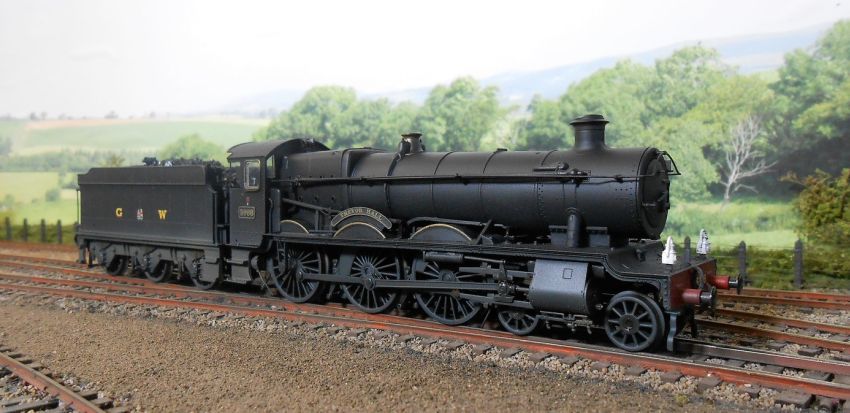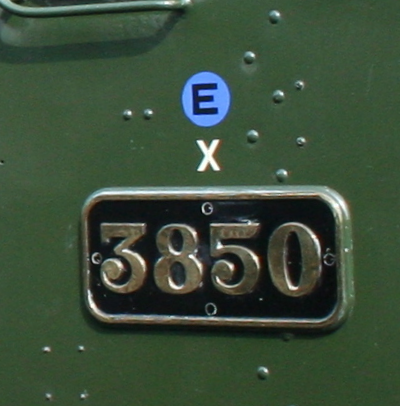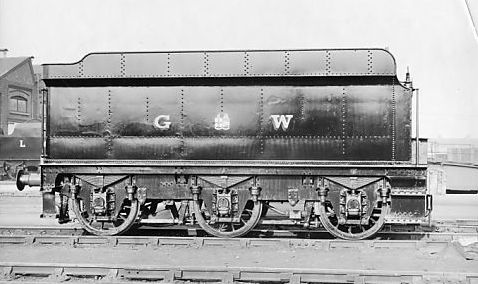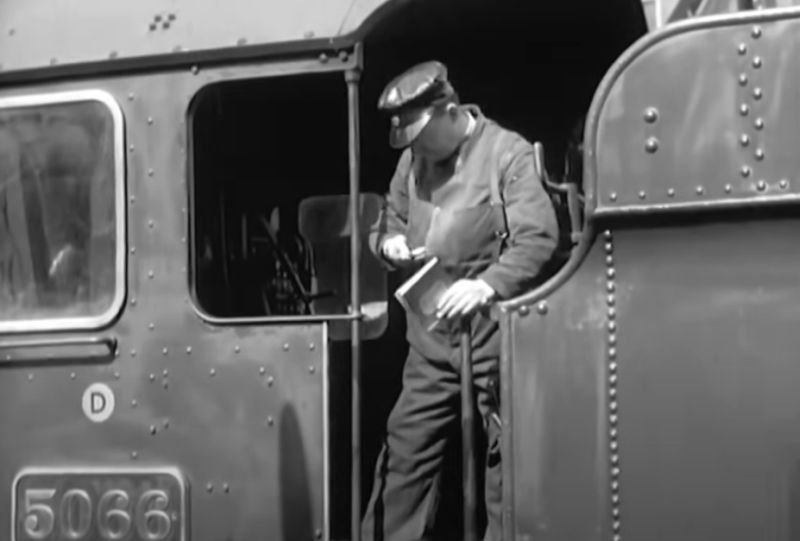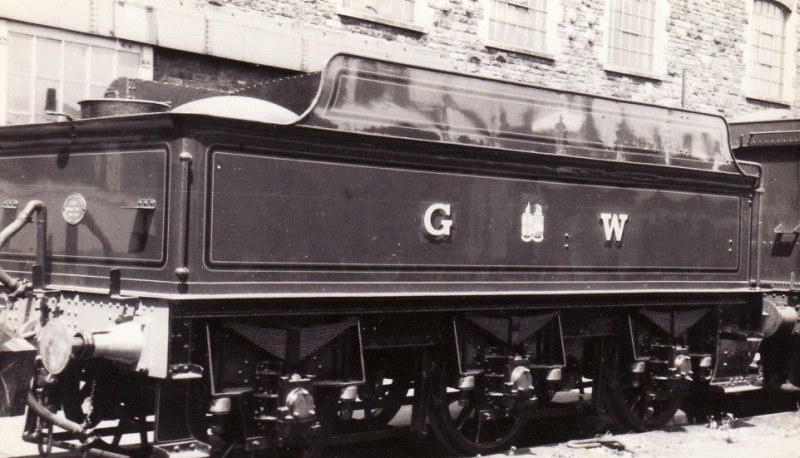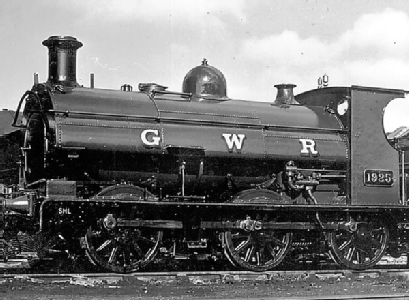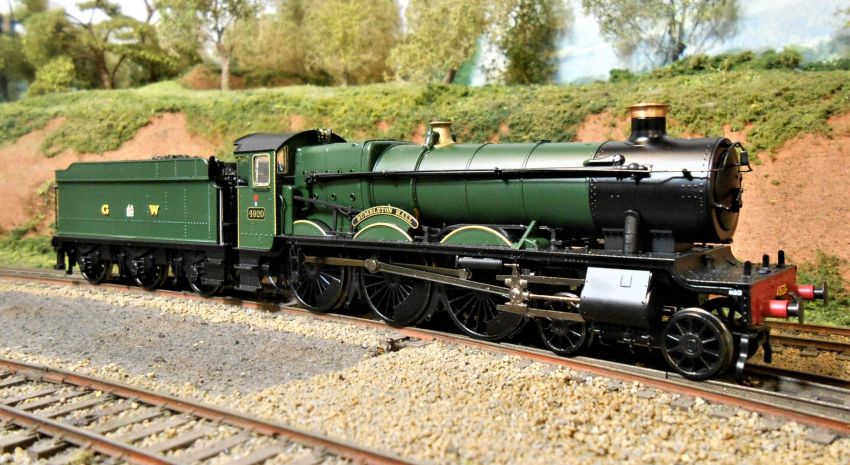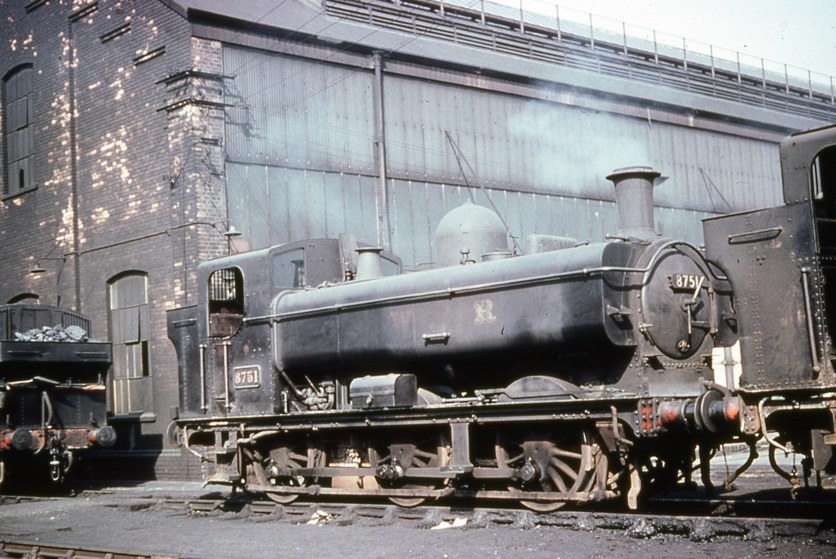| Section Page | Previous Page | Next Page |
GWR 1942–1947 loco livery
From 1942, the shirtbutton ceased to be used. Ordinary passenger and goods classes carried the letters 'G W R' appropriately spaced on tender or tank sides, and express passenger locos had the Coat of Arms between 'G' and 'W'. On tank locos, there was some variation in the spacing between the letters 'G W R'. From April 1942 (possibly February 1942) to 1945, all classes receiving full repaints in the works, except for some Kings, Castles and Stars, were painted all black, as a result of wartime shortages 1. Locos were not lined, and it seems that safety valve covers were painted over. For locos painted black, the insignia did not have any black shading. Castles 5001 and 5018 were noted in all black 2. To aid their visibility in wartime conditions, power and route restriction indicators positioned high on cab sides were lowered to be above the numberplate. Insignia were placed to avoid rivets on tank and tender sides. (Example of how not to do it!)
In WWII, Counties, Halls, Granges and some 2-8-0s were permitted to haul loads heavier than those specified for their power classification. These engines had a 2.5" white X painted above the number plate. This X notation continued into the BR(W) era.
In 1945 green was restored, as was polished safety valve covers to those locos with copper-capped chimneys – as on the Manor shown above. It is not known when in 1945 the return to green commenced. Lining was restricted to the express passenger locos and their tenders, but loco valances, tender frames, cylinders, buffer housings, internal cab, and firebox lining over splashers were no longer lined. It is not clear how many classes were regarded as 'express passenger' in the immediate aftermath of WWII, and there was a degree of inconsistency in the application of lining to locos depending on the availability of painting staff. Some Castles appeared freshly painted without lining in 1946, and their tenders were also unlined. Halls were shopped without lining, but the new Modified Halls (6971–90) appeared with lining. It seems that all Collett 4000g tenders, lined or unlined, carried G crest W regardless of whether they would be assigned to 'express passenger' locos, but all Hawksworth 4000g tenders were lined. A 1947 Swindon paint specification indicates that fittings on the tops of pannier and saddle tanks were in green. Tops and fittings on side tank locos remained black. In the same specification, green is cited for "cabsides front and back (inside and outside)" but black for "bunker coal space". For enclosed cab tank engines, the black 'bunker coal space' did not extend to the outside rear face of the cab, which remained in green. Some tank locos took their G W R liveries up to their last days in the early 1960s, e.g. 9703. Other locos still carrying G W R into the late 1950s and early 1960s were 4628, 6733, 7428, 8792 and 9710.
1925, in standard 1947 livery, a unique repaint for the 1949 film 'The Chiltern Hundreds', was the only saddle tank to have been repainted in green post-WWII.
1 In April 1942, Hawksworth issued a directive "All engines and tenders, with the exception of 'Kings' and 'Castles' will be painted black when they require repainting after repairs or building. No engines will be lined after they have been painted." (GWR Circular No 6251: CME Department, Swindon. Painting of Locomotives, 3 April 1942).
Further reading: |
| Section Page | Previous Page | Next Page |
